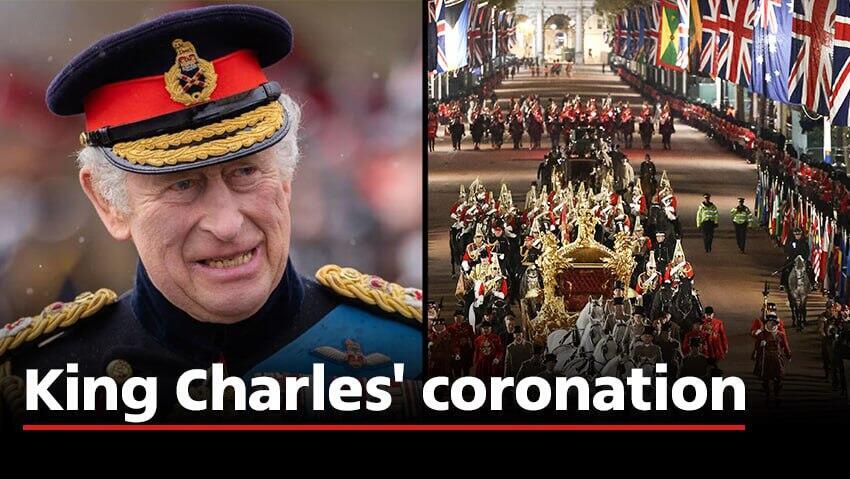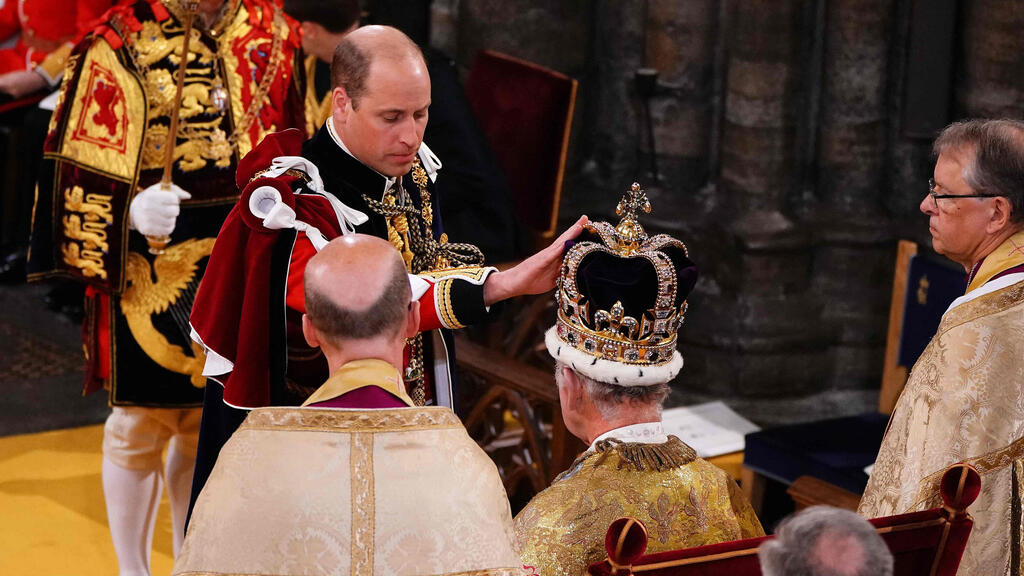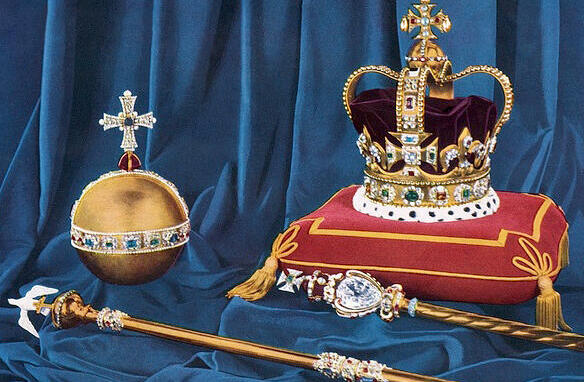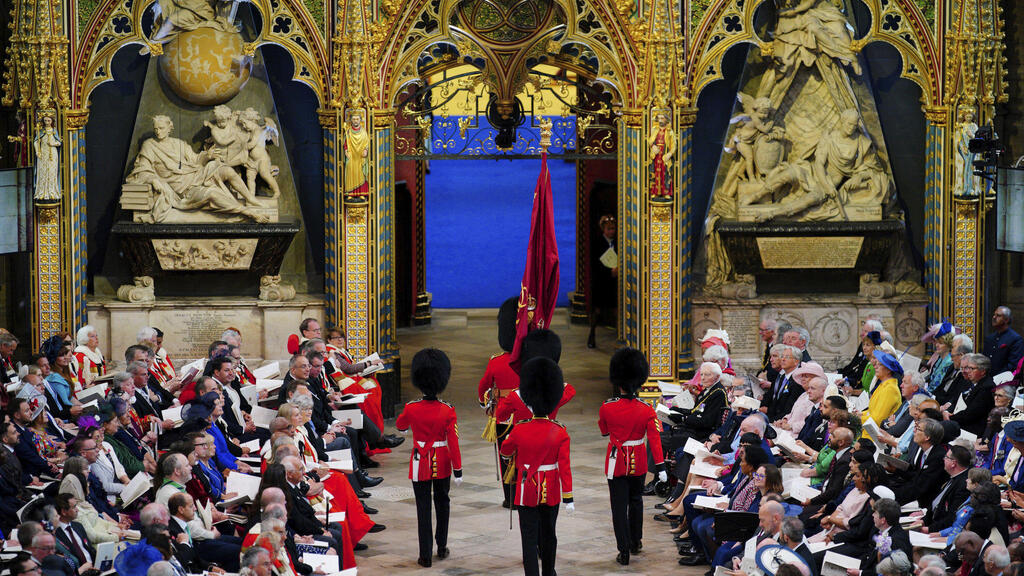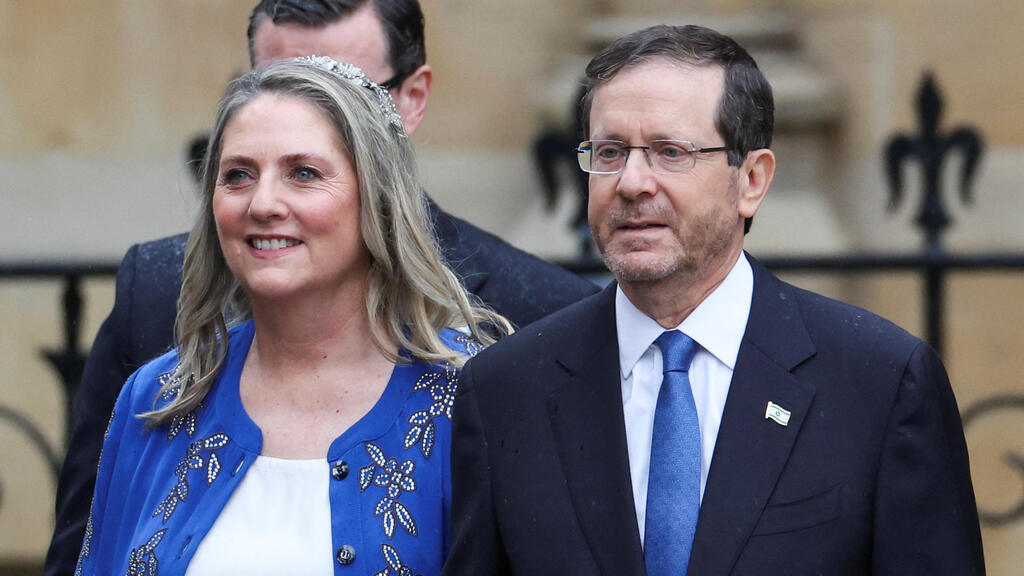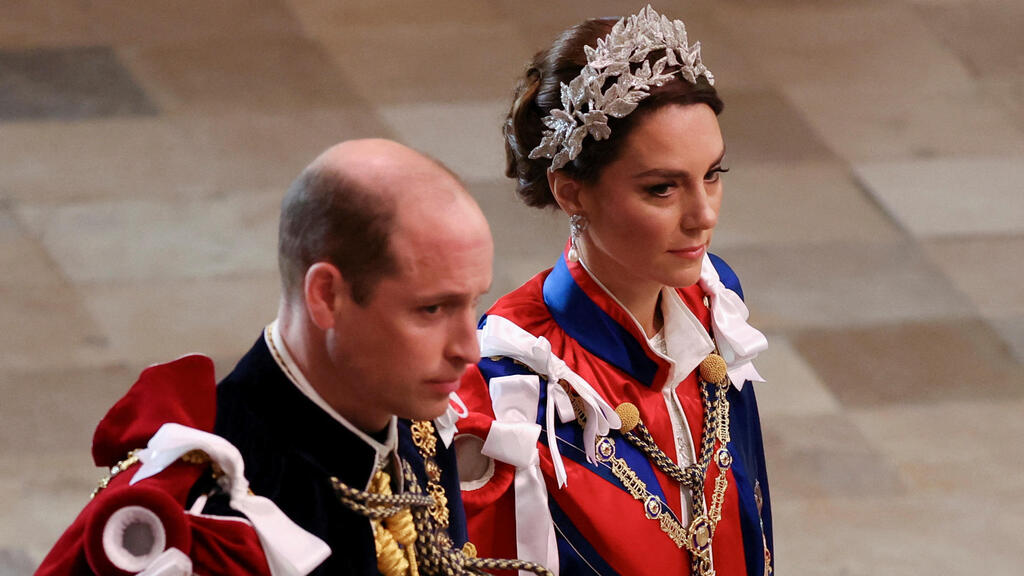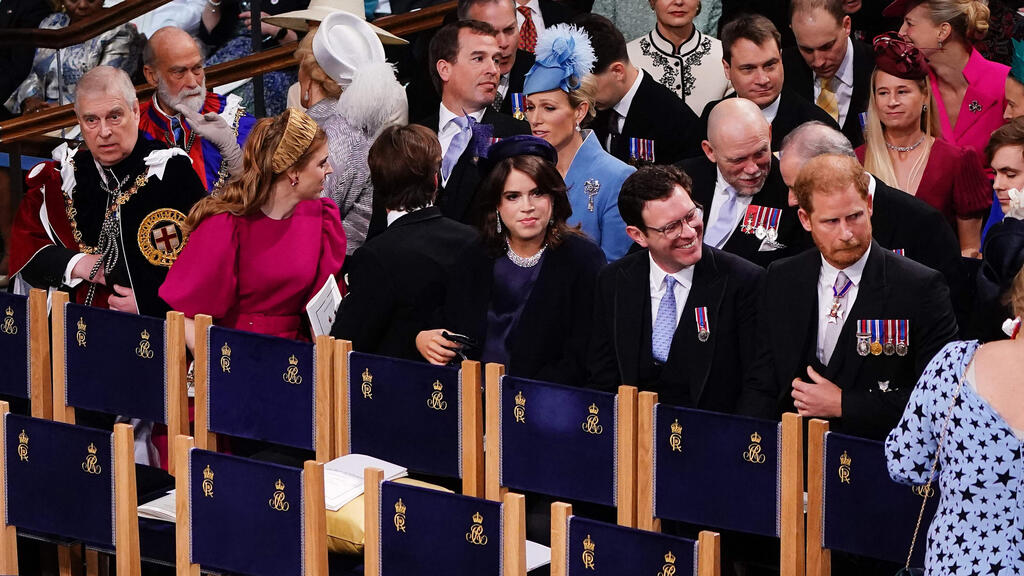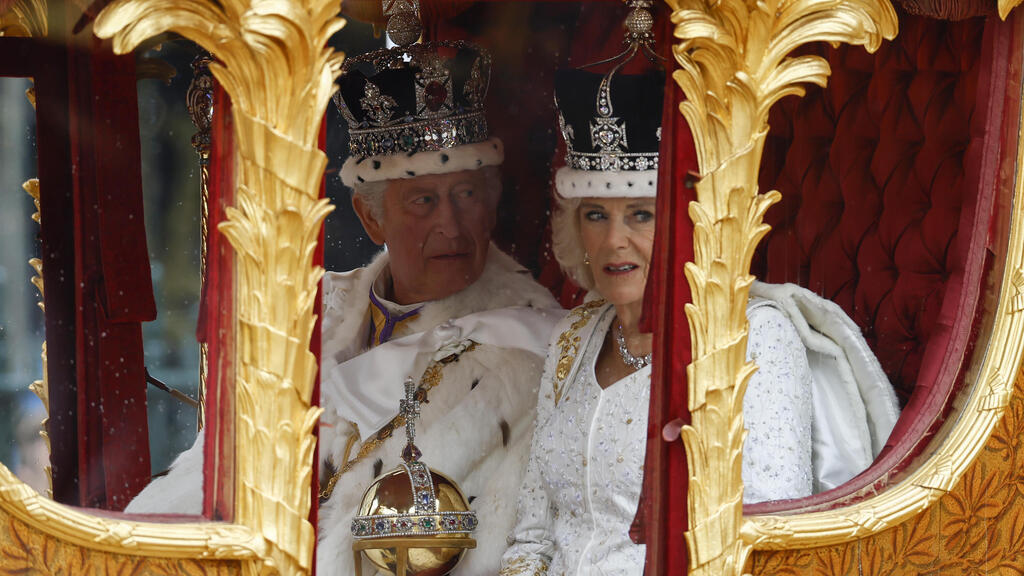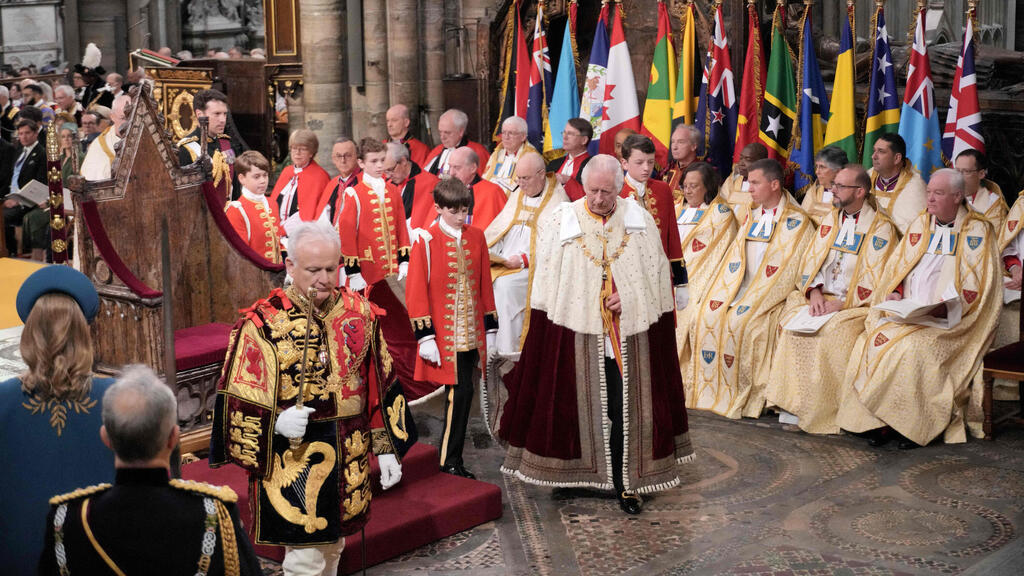Getting your Trinity Audio player ready...
People from across Britain and the world gathered on Saturday in central London for the coronation of King Charles III, marking the continuation of the British monarchy's centuries-old tradition.
Other stories:
In front of a congregation of about 100 world leaders and a television audience of millions, the Archbishop of Canterbury, the spiritual leader of the Anglican Church, slowly placed the 360-year-old St Edward's Crown on Charles' head as he sat upon a 14th-century throne in Westminster Abbey.
Charles' second wife Camilla, 75, was also crowned queen during the two-hour ceremony. The royal couple had left Buckingham Palace for the abbey in the modern, black Diamond State Jubilee Coach accompanied by cavalrymen wearing shining breastplates and plumed helmets.
Saturday's event was on a smaller scale than that staged for Queen Elizabeth in 1953, but still sought to be spectacular, featuring an array of historical regalia from golden orbs and bejeweled swords to a scepter holding the world's largest colorless cut diamond.
Hundreds of soldiers in scarlet uniforms and black bearskin hats lined the route along The Mall, the grand boulevard to Buckingham Palace. Tens of thousands ignored the light rain to mass in a crowd and watch what some saw as a moment of history. Additionally, more than 11,000 police were deployed to stamp out any attempted disruption, and the Republic campaign group said its leader Graham Smith had been arrested along with five other protesters.
Inside the abbey, bedecked with flowers and flags, politicians and representatives from Commonwealth nations took their seats alongside charity workers and celebrities, including actors Emma Thompson, Maggie Smith, Judi Dench, and U.S. singer Katy Perry.
Among the guests of honor were also Israeli President Isaac Herzog and his wife Michal Herzog.
There was no formal role for either Charles' younger son Prince Harry after his high-profile falling out with his family, or his brother Prince Andrew, who was forced to quit royal duties because of his friendship with late U.S. financier Jeffrey Epstein, a convicted sex offender.
They sat in the third row behind working members of the royal family.
"No other country could put on such a dazzling display - the processions, the pageantry, the ceremonies, and street parties," Prime Minister Rishi Sunak said.
Despite Sunak's enthusiasm, the coronation takes place amid a cost of living crisis and public skepticism, particularly among the young, about the role and relevance of the monarchy.
"It is an unequal and out-of-date system because it has a hereditary billionaire individual born into wealth and privilege who basically symbolizes the inequality of wealth and power in our society," said lawmaker Clive Lewis, who was among the anti-monarchy protesters.
After the service, Charles and Camilla departed in the four-tonne Gold State Coach built for George III, the last king of Britain's American colonies, riding to Buckingham Palace in a one-mile procession of 4,000 military personnel from 39 nations.
The British monarchy is one of the world's oldest and most storied institutions, dating back over a thousand years. Throughout its long history, the British monarchy has seen moments of triumph and crisis and has evolved to meet the changing needs of the people it serves.
In the modern era, Queen Elizabeth II has been a beloved and steadfast leader, overseeing the reinvigoration of the monarchy and presiding over a number of historic moments.
Now the British monarchy ushers in a new era despite the challenges that lie ahead. King Charles III carries with him the legacy of his late mother and the traditions and values that have made the British monarchy an enduring symbol of stability and strength.
First published: 13:03, 05.06.23


